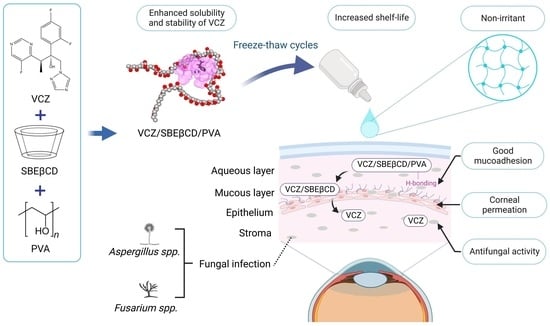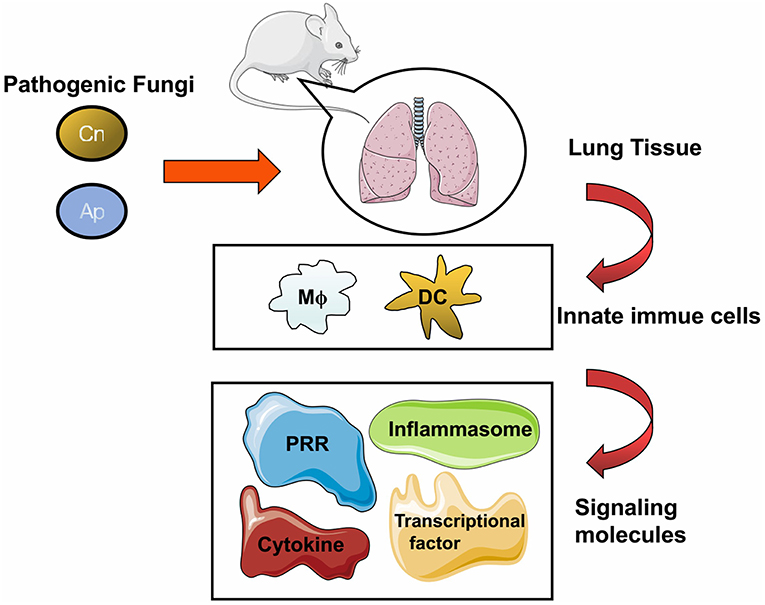Voriconazole powder is a potent antifungal medication that has shown significant efficacy in treating various fungal infections, including those affecting the lungs. This broad-spectrum triazole antifungal agent has become a crucial tool in combating invasive fungal infections, particularly in immunocompromised patients. In this article, we will explore the effectiveness of voriconazole powder in treating lung fungal infections, its mechanism of action, and important considerations for its use.
How does Voriconazole work against fungal infections?
Voriconazole Powder works by inhibiting the synthesis of ergosterol, a vital component of fungal cell membranes. This mechanism of action is crucial for understanding its effectiveness against a wide range of fungal pathogens. The drug interferes with the fungal cytochrome P450-dependent enzyme 14α-sterol demethylase, which is responsible for converting lanosterol to ergosterol. By disrupting this process, voriconazole causes structural and functional changes in the fungal cell membrane, ultimately leading to cell death.

The broad-spectrum activity of voriconazole makes it effective against various fungal species, including Aspergillus, Candida, Scedosporium, and Fusarium. This wide coverage is particularly important when treating lung infections, as these can be caused by different fungal pathogens. Voriconazole's ability to penetrate lung tissue effectively contributes to its success in treating pulmonary fungal infections.
One of the key advantages of voriconazole is its favorable pharmacokinetic profile. The drug exhibits good oral bioavailability, allowing for both intravenous and oral administration. This flexibility in dosing routes is beneficial for long-term treatment regimens, which are often necessary for severe fungal infections of the lungs. Additionally, voriconazole demonstrates good tissue penetration, including into the cerebrospinal fluid, making it suitable for treating fungal infections that may spread beyond the lungs.
Clinical studies have shown that voriconazole is particularly effective against invasive aspergillosis, a serious fungal infection that often affects the lungs of immunocompromised patients. In a landmark study comparing voriconazole to amphotericin B for the primary treatment of invasive aspergillosis, voriconazole showed superior efficacy and improved survival rates. This evidence has led to voriconazole becoming the first-line treatment for invasive aspergillosis in many clinical guidelines.
What types of lung fungal infections can Voriconazole treat?
Voriconazole has demonstrated efficacy against a wide range of fungal infections that can affect the lungs. Its broad-spectrum activity makes it a valuable tool in treating both common and rare fungal pathogens. Some of the key lung fungal infections that voriconazole can effectively treat include:
- Invasive Aspergillosis: This is one of the most serious fungal infections of the lungs, particularly in immunocompromised patients. Voriconazole has shown superior efficacy compared to other antifungal agents in treating invasive aspergillosis, making it the first-line treatment in many cases.
- Pulmonary Candidiasis: While less common than aspergillosis, Candida species can cause lung infections, especially in critically ill patients. Voriconazole has good activity against many Candida species, including some that may be resistant to other antifungal drugs.
- Scedosporiosis: Infections caused by Scedosporium species are often challenging to treat due to their resistance to many antifungal agents. Voriconazole has shown promising results in treating these infections, including those affecting the lungs.
- Fusariosis: Fusarium species can cause severe infections in immunocompromised hosts, including pneumonia. Voriconazole has demonstrated efficacy against these difficult-to-treat infections.
- Cryptococcosis: While not the first-line treatment, voriconazole has shown activity against Cryptococcus neoformans, which can cause severe lung infections, particularly in HIV-positive individuals.

The effectiveness of voriconazole in treating these infections is due to its ability to achieve adequate concentrations in lung tissue. Studies have shown that voriconazole concentrations in pulmonary epithelial lining fluid often exceed those in plasma, ensuring that therapeutic levels are reached at the site of infection.
It's important to note that while voriconazole is effective against many fungal pathogens, proper identification of the causative organism is crucial for optimal treatment. Some fungal species may be intrinsically resistant to voriconazole, and in such cases, alternative antifungal agents may be necessary. Therefore, accurate diagnosis through culture, molecular methods, or histopathology is essential before initiating treatment.
In addition to its use as a primary treatment, voriconazole also plays a role in prophylaxis against fungal infections in high-risk patients, such as those undergoing hematopoietic stem cell transplantation. This preventive use can significantly reduce the incidence of invasive fungal infections, including those affecting the lungs, in vulnerable populations.
What is the recommended dosage of Voriconazole for lung infections?
The dosage of Voriconazole Powder for treating lung fungal infections can vary depending on several factors, including the severity of the infection, the patient's age, weight, and overall health status. It's crucial to follow the prescribing information and guidelines provided by healthcare professionals. However, general dosing recommendations for voriconazole in adult patients with fungal lung infections typically follow this pattern:
- Intravenous Administration:
- Loading dose: 6 mg/kg every 12 hours for the first 24 hours
- Maintenance dose: 4 mg/kg every 12 hours
- Oral Administration:
- Patients weighing 40 kg or more:
- Loading dose: 400 mg every 12 hours for the first 24 hours
- Maintenance dose: 200-300 mg every 12 hours
- Patients weighing less than 40 kg:
- Loading dose: 200 mg every 12 hours for the first 24 hours
- Maintenance dose: 100-150 mg every 12 hours
- Patients weighing 40 kg or more:
The duration of treatment can vary significantly depending on the type and severity of the infection, as well as the patient's response to therapy. For invasive fungal infections, including those affecting the lungs, treatment may need to be continued for several weeks to months.
It's important to note that voriconazole exhibits non-linear pharmacokinetics, meaning that changes in dose do not result in proportional changes in drug exposure. This characteristic necessitates careful monitoring of drug levels in some patients to ensure that therapeutic concentrations are maintained while avoiding toxicity.
Therapeutic drug monitoring (TDM) is often recommended when using voriconazole, especially in certain patient populations or clinical scenarios:
- Patients with severe infections or those not responding to initial therapy
- Individuals with potential drug-drug interactions that may affect voriconazole levels
- Patients with hepatic dysfunction
- Children and adolescents, who may have more variable pharmacokinetics
The target trough concentration for voriconazole typically ranges from 1-5.5 μg/mL, with levels above 5.5 μg/mL potentially associated with increased toxicity. Regular monitoring of liver function tests is also essential, as voriconazole can cause hepatotoxicity in some patients.
When transitioning from intravenous to oral therapy, it's important to note that voriconazole has excellent oral bioavailability (96% in adults). This allows for easy conversion between IV and oral formulations without the need for dose adjustments in most cases. However, factors such as the patient's ability to tolerate oral medications and any gastrointestinal issues that might affect absorption should be considered.
In conclusion, voriconazole powder is a highly effective treatment option for various fungal infections of the lungs. Its broad-spectrum activity, favorable pharmacokinetic profile, and ability to penetrate lung tissue make it a valuable tool in combating these often life-threatening infections. However, like all potent medications, it requires careful administration, monitoring, and adjustment based on individual patient factors to ensure optimal efficacy and safety.
If you are also interested in this product and want to know more product details, or want to know about other related products, please feel free to contact sasha_slsbio@aliyun.com.
References
- Herbrecht R, et al. Voriconazole versus amphotericin B for primary therapy of invasive aspergillosis. N Engl J Med. 2002;347(6):408-415.
- Patterson TF, et al. Practice Guidelines for the Diagnosis and Management of Aspergillosis: 2016 Update by the Infectious Diseases Society of America. Clin Infect Dis. 2016;63(4):e1-e60.
- Pascual A, et al. Voriconazole therapeutic drug monitoring in patients with invasive mycoses improves efficacy and safety outcomes. Clin Infect Dis. 2008;46(2):201-211.
- Lat A, Thompson GR 3rd. Update on the optimal use of voriconazole for invasive fungal infections. Infect Drug Resist. 2011;4:43-53.
- Dolton MJ, et al. Multicenter study of voriconazole pharmacokinetics and therapeutic drug monitoring. Antimicrob Agents Chemother. 2012;56(11):5535-5540.
- Tissot F, et al. ECIL-6 guidelines for the treatment of invasive candidiasis, aspergillosis and mucormycosis in leukemia and hematopoietic stem cell transplant patients. Haematologica. 2017;102(3):433-444.
- Ullmann AJ, et al. ESCMID* guideline for the diagnosis and management of Candida diseases 2012: adults with haematological malignancies and after haematopoietic stem cell transplantation (HCT). Clin Microbiol Infect. 2012;18 Suppl 7:53-67.
- Hamada Y, et al. Correlation between voriconazole trough plasma concentration and hepatotoxicity in patients with different CYP2C19 genotypes. Int J Antimicrob Agents. 2016;48(5):566-571.
- Soler-Palacín P, et al. Voriconazole drug monitoring in the management of invasive fungal infection in immunocompromised children: a prospective study. J Antimicrob Chemother. 2012;67(3):700-706.
- Vandecasteele SJ, et al. Pharmacokinetics of voriconazole during continuous venovenous haemofiltration. J Antimicrob Chemother. 2015;70(4):1194-1200.

